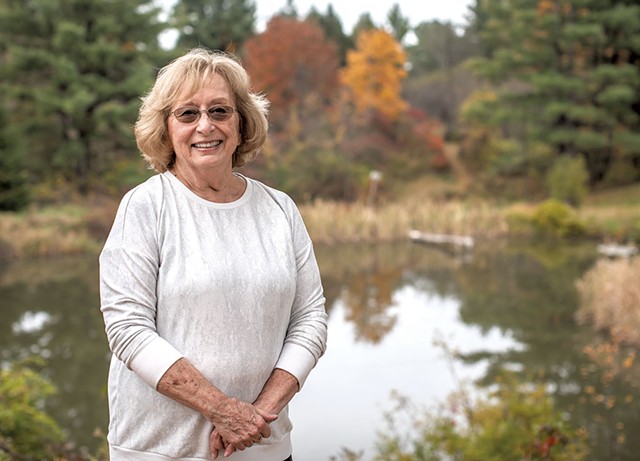
- Luke Awtry
- Judy Henderson
Some years ago, a 25-year-old technical writer named Jack was hospitalized with severe pneumonia that caused him episodes of respiratory arrest. Despite treatment with constant oxygen, he still suffered seizures when there was an insufficient supply to his brain. Anita, his primary care nurse, was a steady presence in his life. One day she told Jack she was taking a long weekend to celebrate a birthday and other nurses would see to his care.
While she was gone, Jack experienced severe respiratory arrest, flatlined and had to be resuscitated. When he was revived, Jack described the sensation of meeting Anita in a beautiful, bucolic setting. He recalled that Anita gently told him to return to where he'd come from and asked him to find her parents and relay that she was sorry to have wrecked the red sports car. Then she walked away.
When Jack recounted this vivid experience to his temporary nurse, she gave him a shocked look and left the room. Later, he learned that Anita had died over the weekend when she crashed a red MGB her parents had given her for her birthday.
Is your hair standing on end? Did a shiver quiver your spine? What Jack went though was a near-death experience, or NDE for short — what happens when you "die" and come back. It's the grim reaper giving you a do-over, a knock on death's door that goes unanswered, finding heaven's gate locked. Not everyone who has an NDE has visions. But nearly one in five people do, and some of their tales beggar belief.
Jack's story was recorded by Bruce Greyson, a professor emeritus of psychiatry and neurobehavioral sciences at the University of Virginia School of Medicine who has been studying NDEs for 50 years. He is the author of the 2021 book After: A Doctor Explores What Near-Death Experiences Reveal About Life and Beyond.
"I have many anecdotes about experiencers who accurately reported seeing, while they were completely unconscious, very surprising and unpredictable things going on around their unconscious bodies — like a nurse's unmatched shoelaces or a doctor's erratic and unexpected behavior during an operation," Greyson told Seven Days. What freezes his follicles are cases such as Jack's, he said, when "the experiencer sees a deceased person who was not yet known to have died."
NDEs are common when people come close to death or face intense threats or serious illness, Greyson explained, and thus are not limited to individuals who are pronounced "dead" only to return to the land of the living. A geologist named Albert Heim first identified the phenomenon in an article about mountain climbers, but after he died in 1937, the concept was largely forgotten. That changed in 1975 with the publication of Life After Life by Raymond A. Moody Jr., which thrust the term "near-death experience" into the postmortem zeitgeist.
By the early 2000s, nearly a third of all Americans had experienced an NDE, according to The Handbook of Near-Death Experiences: Thirty Years of Investigation, a 2009 research book that Greyson coedited. That number may come as a surprise, perhaps because the topic is not openly or widely discussed. Some experiencers feel stigmatized or fear that they'll be dismissed as indulging in fantasy.
According to Greyson, NDEs come in different shapes and sizes. The most common experience, however, is nothing.
My interest in the phenomenon was triggered earlier this year when I interviewed Shelburne highway superintendent Paul Goodrich, who suffered a heart attack in 2006 after plowing town roads. En route to the University of Vermont Medical Center, he flatlined for a couple of minutes and had to be resuscitated. The genial Goodrich reported no visions; the event was a blank slate, he said, until he was revived "when they put the jumper cables on me."
Those who do have visions often describe feelings of deep comfort, love and well-being and a release from pain. Some have out-of-body experiences, including floating above their physical self. Others report being drawn into a dark tunnel with a brilliant light at the end. And some see their lives flash before their eyes, recalling important events from their past.
"We now know that somewhere in the range of 10 to 20 percent of people have these experiences," said Allan Kellehear, a medical and public health sociologist at UVM Medical Center and a clinical professor at the College of Nursing and Health Sciences who has written extensively about death and dying, referring to experiences that involve visions. "And in these memories are a constellation of experiences."
Both he and Greyson noted that no known health-related or sociodemographic factors — gender, religious affiliation, ethnicity, etc. — predispose people to have a near-death experience.
"We have not found any particular personal qualities, like prior beliefs or personality traits, nor any particular physiological factors related to the close brush with death, that can predict who will have an NDE or what kind of NDE someone will have," Greyson said. He added, "Many NDEs include features that directly contradict what the experiencer was primed to believe."
Many experts continue to debate whether NDEs are evidence that death has an epilogue or simply our brains' way of reacting to a mortal threat. Greyson dismisses the latter theory "because they occur in some people whose brains have stopped functioning, and because many NDEs include corroborated, accurate perceptions from an out-of-body visual perspective," he said. "I think they more likely suggest some sort of afterlife, but they are not proof of an afterlife."
Both theories miss the point, Kellehear argues.
"The real question is not whether we survive death but rather, what do these people learn from their experiences?" he countered. "What new meanings and insights are developed by people who encounter these remarkable experiences, and by association, what are we all to take away from them to help make sense of our lives?"
To explore some of those "meanings and insights," I talked with a few Vermonters about their near-death experiences and those of their loved ones. Their accounts range from the surreal to the spiritual and feature many of the traits identified by researchers such as Greyson and Kellehear. While not all hair-raisers, the following tales lift the veil for a peek at the Other Side.
'All of a Sudden, I Was in Another Place'
In 2011, retired dental hygienist Judy Henderson was living alone in Bedford, Iowa, a town of 1,500 souls. (She has since relocated to Shelburne with her second husband.) Around four o'clock one morning, Henderson, then 70, awoke with a horrible pain in her chest that she described as "like a stake had been driven though my heart."
In her distress, she tried to reach under her ribs to massage her heart. "I know it sounds weird, but it was all I could think of to do," she recalled. Henderson couldn't reach the painful spot but kept pressing.
"And then, all of a sudden, I was in another place, all golden," she said. "It wasn't shiny gold, but it was warm. Gold everywhere. There was no floor, no walls, no ceiling. No seams, no lines — I get chills just thinking about it.
"And I was standing there, wearing normal clothes, and I could feel my feet were on some kind of solid footing," she continued. "And I was looking at this gold, and I felt the most wonderful, loving presence ... like all the angels hugged me with their wings. Like something wonderful was washing over my skin. It was loving, warm, tender and just peace I have never, ever known before. I just wanted to experience that forever."
Henderson yearned to move further into the golden vision, but her feet felt heavy, stuck to the ground.
"I tried to help myself get forward, and I couldn't go toward it," she said. "I must have passed out, because when I next looked at the time, it was about seven o'clock. And I called 911 because I couldn't breathe."
Henderson was taken by ambulance to a hospital in Maryville, Mo., 25 miles away, where doctors determined she'd suffered heart failure and installed a pacemaker.
"My heart just stopped," Henderson said, "because there's a little node on your heart that sends electrical impulses to your different chambers, and it just stopped being electrical."
On the way to the hospital, Henderson remembered thinking it was "the perfect time to die." A devout Catholic, she'd recently been to confession and absolved of her sins. "It was the most wonderful, glorious feeling," she said, "so far above anything I have ever experienced."
She fully embraced the event. But "I didn't tell anybody for a long time," she said, "because I was afraid people would think I was a weirdo."
'It Was Pure Hell'
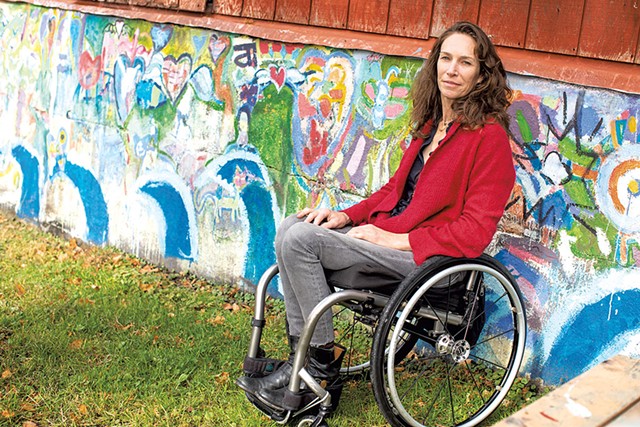
- Luke Awtry
- Edie Perkins
Edie Perkins, 51, is the executive director of the Kelly Brush Foundation, a Vermont nonprofit that supports people with spinal cord injuries. She loves her job, and her leadership was evident in the record-breaking success of September's annual fundraising ride, which raised $1 million for adaptive sports.
Still, she might have preferred to be a less ideal candidate for the position.
In 2016, Perkins, an experienced cyclist, was out for an early morning ride in Glendale, Calif. Coming down a hill at about 20 miles per hour, she entered an intersection and was T-boned by a motorist running a red light. Perkins flipped over the car, shattering its windshield, flew into the air and landed on the pavement.
"I saw it coming," Perkins recalled. She remembers seeing a white SUV and "knowing there was nothing I could do.
"And then I just remember this incredible calm, like this peace that came over me, and it was so vivid," she said. "And then I don't remember anything until sort of coming to and just having this mantra in my head: Stay calm. Stay with it. Stay calm."
A bystander who witnessed the accident held Perkins' hand and tried to comfort her until an ambulance arrived.
"He told me I kept trying to get up and was saying, 'Where's my bike?' I was never unconscious," she said. "But I have this gap in my memory."
Ironically, the accident occurred right in front of a hospital, but it didn't have a trauma center, so Perkins had to be transported elsewhere. "The person who was by my side was a nurse's aide," Perkins said. "And the woman who hit me was a nurse trying to get to work. "
Perkins broke seven vertebrae in her neck and spine and 11 of her 12 ribs. Rushed to a hospital, she stayed there for 10 days before being transferred to another facility. She was paralyzed from the chest down.
"I wanted to know what happened, so I got in touch with the woman who hit me," she said — not for recrimination but to fill her own "memory gap."
"But I didn't think about it as an NDE much, because they pumped me so full of drugs that I couldn't remember the pain," she said. As she thought about the incident and tried to make sense of her NDE, Perkins could only assess the physical damage: her neck broken in three or four places, her C2 severed.
Three years later, her bike accident led to a second NDE, caused by an overdose of drugs administered by her physician. After being hospitalized, Perkins lapsed into a coma. When she woke the next day, she found herself in a mental limbo.
"Scenes kept repeating themselves over and over and over," Perkins said. Unlike her first brush with death, this one didn't fill her with calm. "It was pure hell. I was so confused. Doctors everywhere — yet I didn't know where I was."
The second NDE resonates still. "It took me until now," Perkins said, "to go see a shrink."
'It's Been a Good Ride'

- Luke Awtry
- Ellie Byers and Oscar
Ellie Byers, now 64, had overcome her once-terrible fear of flying with the help of a therapist. So when a student she met while teaching at UVM proposed going skydiving, she was receptive.
On Halloween 1988, Ellie and the student drove to a skydiving club in Malone, N.Y. The cloud ceiling was too low when they arrived, so they waited. Byers silently prayed the clouds wouldn't lift, but they did. In the late afternoon, she went up in a plane with an instructor for a tandem jump.
An altimeter was strapped to Byers' chest so she could monitor the pair's height. They would jump from a mile up, her tandem partner said, and "when we reach 3,000 feet, you're going to wave your arms at me as a signal for me to pull the chute."
Byers thought that was easy enough. But, she said, "going up, I had a very anxious moment thinking, There's something wrong with the parachute. And then I very quickly dismissed it."
With her instructor strapped to her back, Byers crawled out on a wing when they reached altitude. She pushed off into free fall.
"What's wild is, when you're free-falling through the air, you actually don't feel like you're moving," she recalled. Byers focused on the altimeter. At 3,500 feet, she waved her arms, figuring, "Let's get the parachute open and have a nice little gentle drop," she said.
Nothing happened.
Well, I was premature, she thought. Seconds later, at 3,000 feet, she waved again. No response from the instructor.
Fighting panic, Byers waved again at 2,500 feet, and then at 2,000.
"I'm going, "God, is he like friggin' asleep at the switch here or what?" she said. "At 1,500 feet, I had the thought I was going to die. Really. And what was unexpected is that I was overcome by a feeling of total peace and acceptance like nothing I have experienced before or since. I felt totally calm. Like, OK, I'm done. It's been a good ride."
At 1,000 feet, a chute opened. The instructor yelled to Byers that she should bend her legs and brace for a hard landing. They hit the ground safely, and the instructor was shaking as he unhooked Byers.
"He kept saying, 'Oh, my God, oh, my God' and went to hug me. I told him not to. I was really angry," she said.
But not at the instructor. "I was angry at the fact that I was still alive," Byers said.
"Emotionally, intellectually — just not physically — I was done," she went on. "When I stood up, it was like reorienting myself to being alive. For a week, I went around split between two worlds."
Deeply embarrassed and shaken, the instructor explained he'd forgotten to properly set the rip cord and had to resort to a backup chute.
Decades later, Byers explained why she still felt cheated by the experience.
"I have dealt with depression in my life ... where I did question, you know, do I really want to continue on this planet?" she said. She added that she wasn't depressed at the time of the skydiving incident, "so it's not like I have a death wish. But I was really completely at peace and accepting the end of my life."
Byers rejected the instructor's offer of a free jump at a later date — how could he understand what she had gone through?
"I think what I experienced was ... a total loss of self," she said. "There was no ego. It was like a fusion of me with the spirit world. I felt I had crossed over."
'What Are You Seeing Over There?'
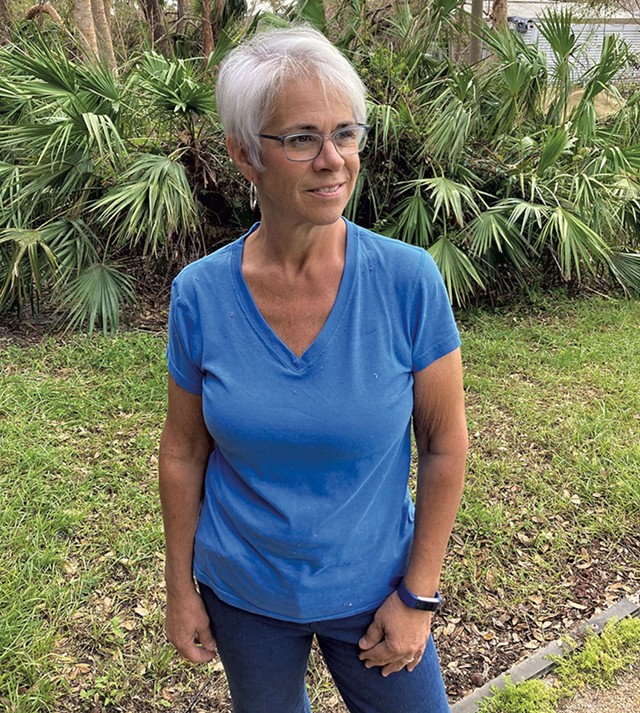
- Courtesy
- Mary Ann Boyd
Mary Ann Boyd is a clinical social worker who teaches "Death and Dying," a course at the Community College of Vermont in Winooski. In 2004, her 70-year-old mother, Dorothy Dattilo, suffered kidney failure. Her prognosis was poor, and her quality of life vastly diminished. Boyd made the decision to place her mother in hospice care.
On the day before Dattilo was due to leave the hospital, she was still in the intensive care unit. Life support had been removed. Boyd sat to the left of her mother, who was propped up in bed. But Dattilo's attention was elsewhere.
"She kept looking over to the right-hand side of the room, up into the corner, where the ceiling met the wall," Boyd explained. "This was odd to me, because here's her, you know, her only child — me — whispering in her left ear, and she kept looking over to the right."
Boyd turned to her father, who was sitting nearby.
"Daddy, something's going on over in that part of the room," she said, pointing. "Look at Mommy, look at what she's doing."
Her mother was pointing at the same area.
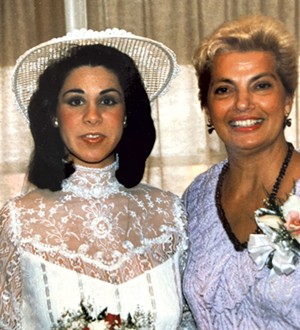
- Courtney
- Mary Ann Boyd (left) with her mother, Dorothy Dattilo, in 1994
"She kept pointing," Boyd recalled, "and I just gently touched her arm to bring her attention back to me." Boyd doesn't consider herself a religious person, but, she said, "My thought was, She's more on the other side than she is with us right now."
As her mother continued pointing, Boyd tapped her on the shoulder to get her attention.
'"What are you seeing over there? What's happening? What do you see?'" she recalled asking her mother.
Dattilo turned to her daughter, and what Boyd saw startled her.
"Her eyes were glowing," Boyd said. The half smile on Dattilo's face made the moment less scary. So Boyd repeated her question: "Mommy, what do you see over there?"
Dattilo raised her arm to point again. "People," she replied.
"What people? Who?" Boyd asked.
"My people."
"Does it feel good?"
Dattilo placed her hand over her heart as she met her daughter's eyes, tears rolling down her cheeks. "Oh," she said, "it's very good."
Said Boyd: "Those were the last words my mother said to me."
Former Boston Red Sox Pitcher Bill Lee Discusses His Recent Brush with Death
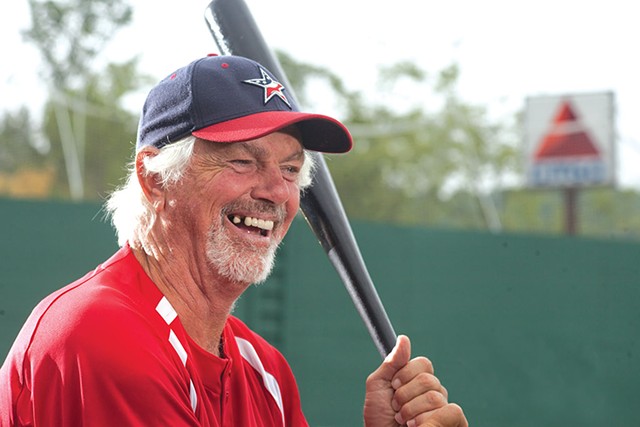
- Matthew Thorsen ©️ Seven Days
- Bill Lee
For someone who (almost) died two months ago, Bill Lee is still at the top of his game. The world-famous former Boston Red Sox and Montreal Expos left-handed pitcher is known as "Spaceman" for his out-of-this-world antics and wickedly funny turns of phrase. As he bit into a tasty lunch prepared by his wife, Diana, at their cozy Craftsbury home, the 75-year-old was as fast with the one-liners as he is with his (still) blazing four-seam fastball.
In August, Bill was warming up to pitch for the Savannah Bananas, an exhibition baseball team in Georgia, when he suddenly passed out in the bullpen, fell backward and stopped breathing. Then, Diana related, he "was brought back to life" — thanks to his quick-thinking catcher, who rushed to his side to perform CPR, and a team of first responders who administered two electric shocks to his heart with a defibrillator.
As Bill gulped down a cup of strong coffee in his Craftsbury kitchen, Diana told him, "People said you could have easily died, Bill. Some are calling it a miracle."
The six-foot-three, white-haired baseball veteran smiled and shot back, "I did die easily! It's about as easy as it gets: falling over backwards with a ball in my hand. The ball rolls out ... safe at home ... a great way to die!"
He laughed vigorously, on a roll. "But I could have died a warrior! I could have died on the field like a gladiator..."
Diana tried to shout above him: "It wasn't your time to go, Bill!"
Still laughing, Bill continued, "Now I am going to die in a nursing home over in goddamn Greensboro with someone wiping spit off my lips!"
He asked me, "Do you know what I told my Savannah Banana teammates as they helped me into the ambulance? I told them I'd always thought I'd die on the field but not in the goddamned bullpen. I always thought it'd be a line drive with my name on it."
After examining Bill, cardiologists at Savannah's Memorial Health University Medical Center discovered he had a lower branch block in his left ventricle and needed a pacemaker.
"They wanted to implant it in the left side of my chest," he said, "but I nixed that. That's the side I pitch from."
The surgeons agreed to move the pacemaker to his right side. He was out of the hospital the next day, and three days later he threw out the first pitch at one of the Bananas' home games.
Because ESPN was televising the Bananas' game when Bill collapsed, news of his illness spread far and quickly. "The phone has never stopped ringing," Diana said. She added that hundreds of friends and fans have reached out to the "Peter Pan of baseball," as many have called him.
"It's amazing. I don't have [internet] or a cellphone," Bill admitted. "But people somehow get in touch with me." (For "research" or to check email, he said, he visits the Craftsbury library.)
Many of the messages, including some from former baseball players such as Bill's longtime friend Gary Bell, expressed worry.
"They tell me I should hang it up or ask me, why aren't I golfing instead?" Bill said. "I hate golfing. And I don't know what else I'd do."
Diana added, "He'll never quit. He's like a kid who just loves the game. I don't know any other player even close to his age who is still playing."
Jesse Cole, the owner of the Savannah Bananas, has called Bill the "eighth wonder of the world." Miro Weinberger, the mayor of Burlington and Bill's catcher with the Burlington Cardinals in Vermont's Senior Baseball League, described him as "the most competitive player I've ever seen, at any age."
Suddenly pensive, Spaceman told me, "You know, [former Major League Baseball pitcher] Jim Bouton, who was a great friend of mine, said it best: 'You spend a good part of your life gripping a baseball, and in the end it turns out that it was the other way around all the time.'"
Again, Bill was on a roll. This time he didn't make wisecracks, however, but explained how his "flirtation with death" reminds him of what Sigmund Freud, Ernest Becker (author of The Denial of Death) and others thought about dying and death. The (well-read) Spaceman had come down to earth.
"Becker told us that, if we embrace our mortality, we won't have to live with fear or guilt," Bill said. "I agree. Isn't that a great way to live your life?"
As I listened, I was reminded of what Bill had told me a few years ago as we sat outside his comfortable home looking out on distant views of meadows and gently rolling hills: "I was born a ballplayer, and someday I'll die a ballplayer. And in between, I've lived a ballplayer's life."
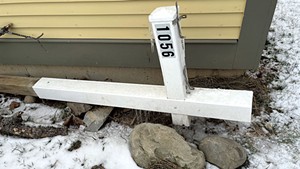

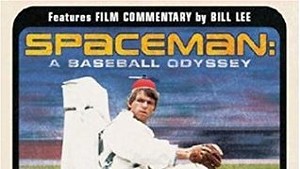





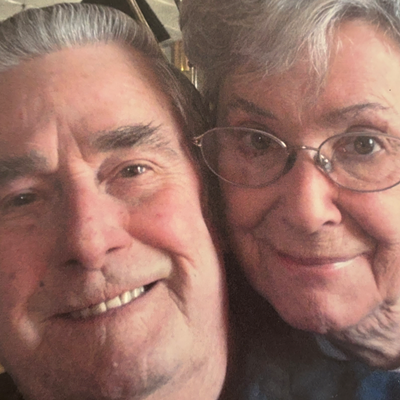
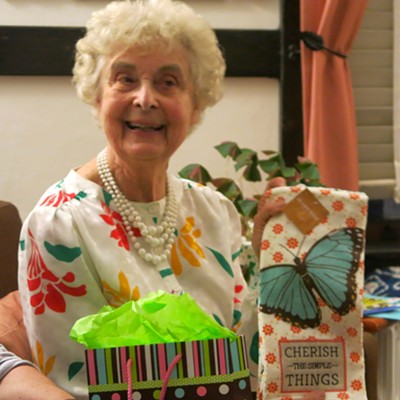
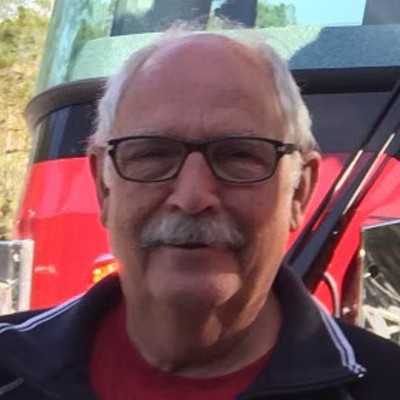
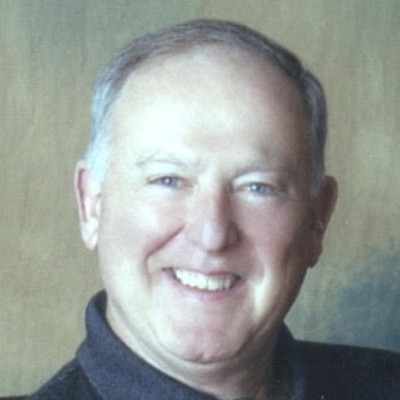
Comments
Comments are closed.
From 2014-2020, Seven Days allowed readers to comment on all stories posted on our website. While we've appreciated the suggestions and insights, right now Seven Days is prioritizing our core mission — producing high-quality, responsible local journalism — over moderating online debates between readers.
To criticize, correct or praise our reporting, please send us a letter to the editor or send us a tip. We’ll check it out and report the results.
Online comments may return when we have better tech tools for managing them. Thanks for reading.